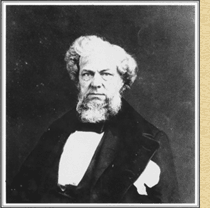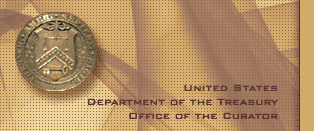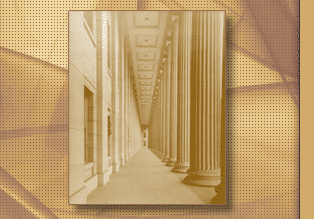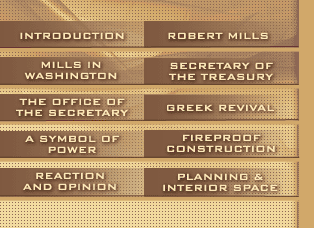“[The
Treasury is] by no means credible to the nation; the
long rows of columns on Fifteenth street… without
any break or projection to relieve monotony, can never
be considered beautiful. The impression produced on
the mind through the medium of the eye, by this long
colonnade, will be similar to that made by a continuous
sound of one melodious note in music...”
~Thomas U. Walter, 1838
In 1838, two years after construction
for the Treasury began, Robert Mills’ design fell
under close scrutiny from Congress. Tight funds due
to a faltering post-Jacksonian economy, design setbacks
that were out of Mills’ control, and a degree
of opportunistic criticism halted construction for two
months.
Complaints about Treasury’s construction
prompted a congressional committee to hire Philadelphia
architect Thomas Ustick Walter to examine the building.
Walter reported four objections to its construction,
which he concluded should be demolished and redesigned
under the direction of an architect of his recommendation.
Walter outlined his criticism:
“ First---the unsuitability
of the site
Second---the weakness of the structure
Thirdly---the want of adaptation of the purposes for
which it was intended; and
Fourthly---its architectural appearance.”

Critic Thomas Ustick
Walter, seen left, became architect to the Capitol as
well as the architect to the Treasury’s South
wing addition following Mills’ tenure as architect
of the original building. Photographed in 1860.
Mills confronted the allegations
with a formal rebuttal lending credence to the durability
of its structure siting his record of successful buildings
of similar construction while defending his architectural
style by noting similar acclaimed contemporary European
precedents.

Treasury’s long
East colonnade, seen right from within the porch,
was the aesthetic feature Walter found particularly
objectionable.
Click
here to see a more detailed image
Congress only narrowly voted to
allow continuation of construction on the Treasury Building,
completing the East and Center wings in 1842. The attack
was a defaming blow to Mills’ public architectural
career and his service as the architect of the Treasury
ran out its tenure soon after the completion of Treasury,
the Patent Office and the Post Office.
The major criticism toward the
Treasury building seems to have come from within the
Treasury Department and Congress. The public’s
reaction to Mills’ Treasury appears more laudatory
than Walter’s assessment with one distinguished
Scottish visitor, Robert Baird, complimenting the Treasury
as a “very striking as well as an exceedingly
handsome erection. |


